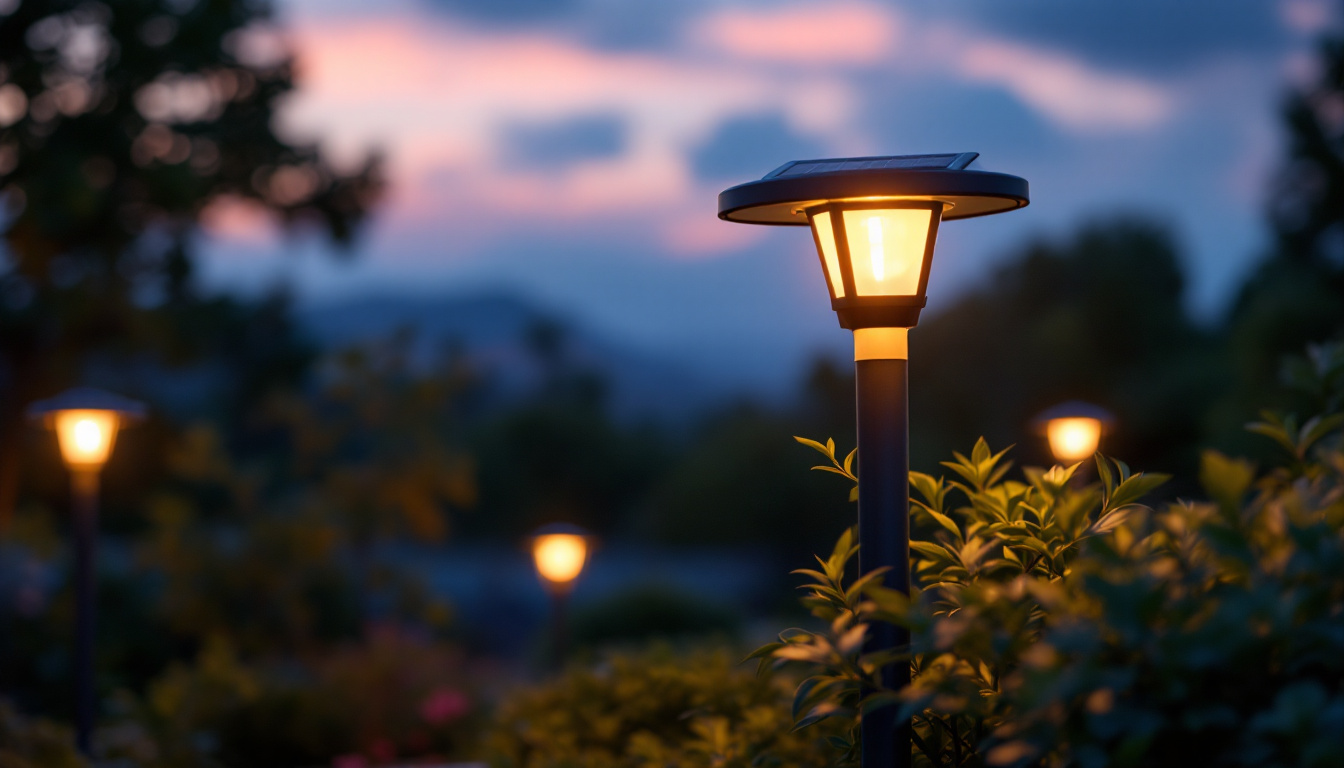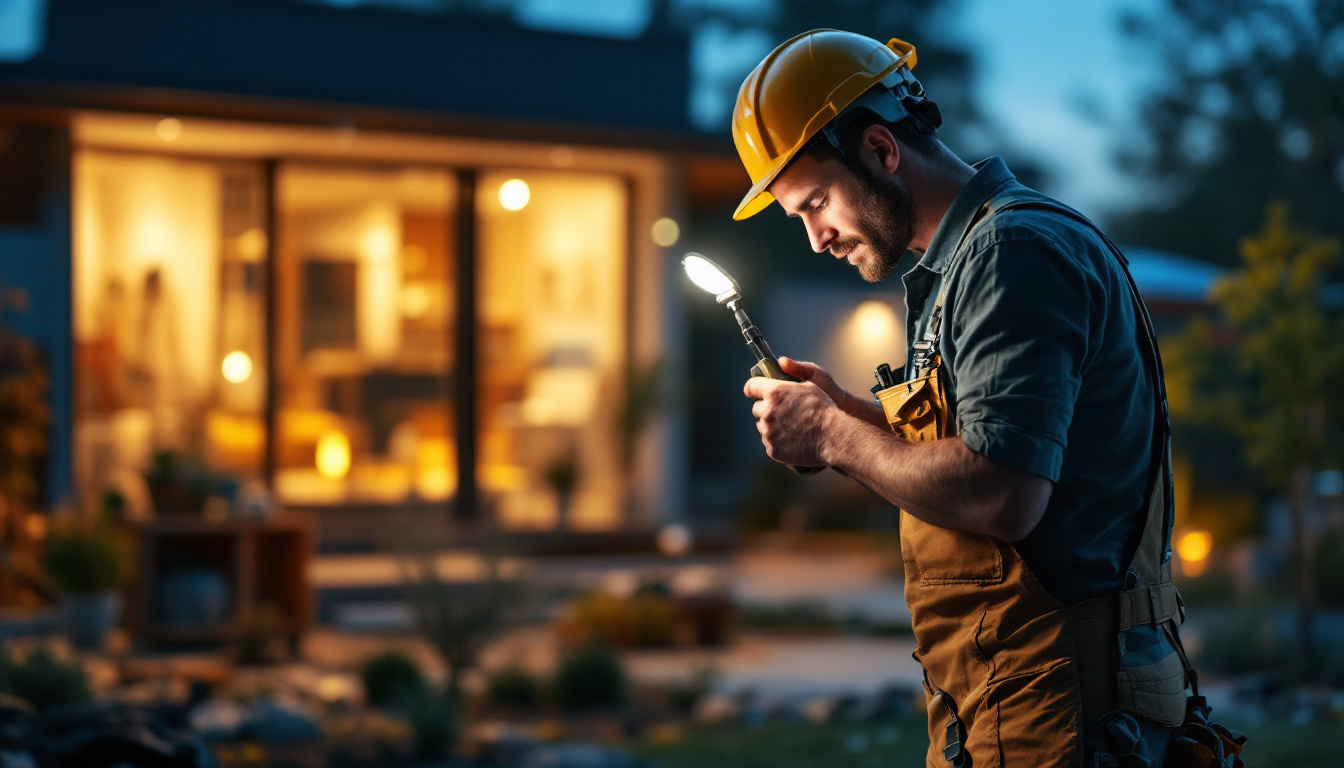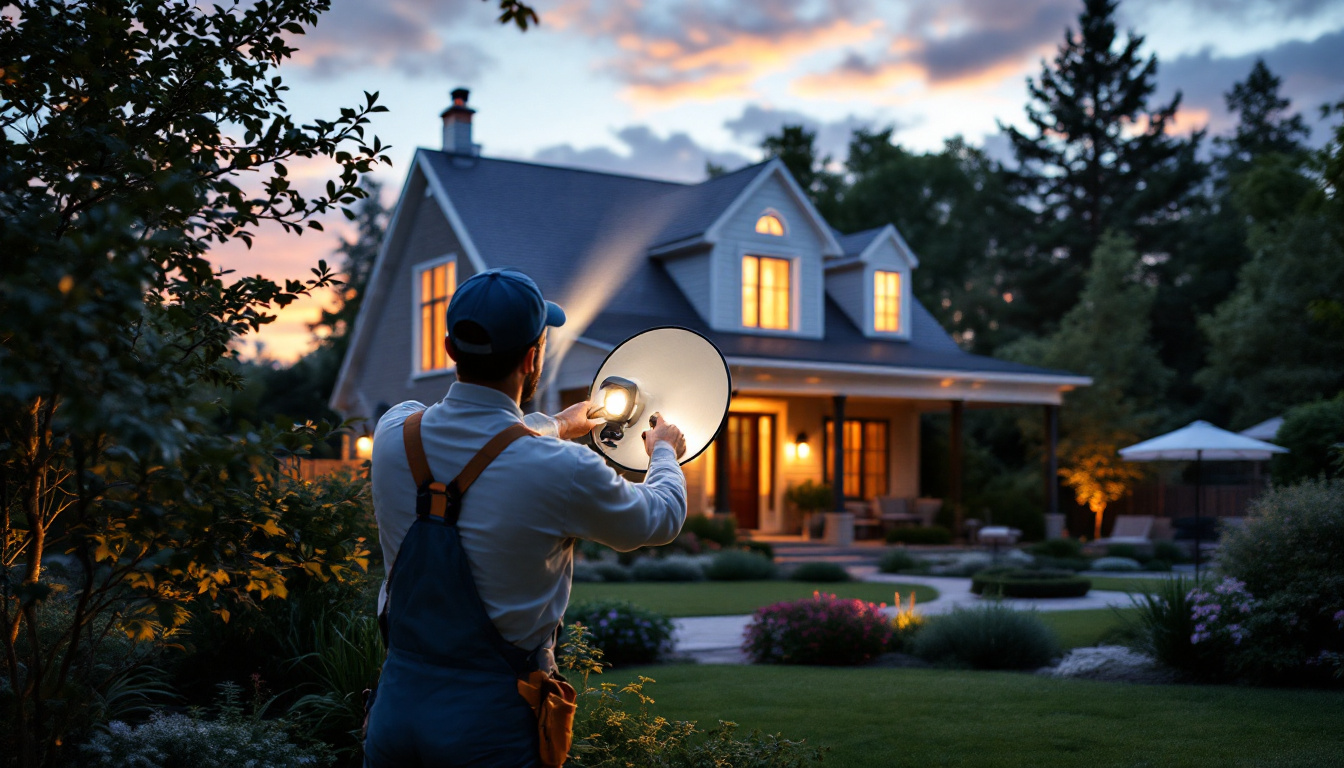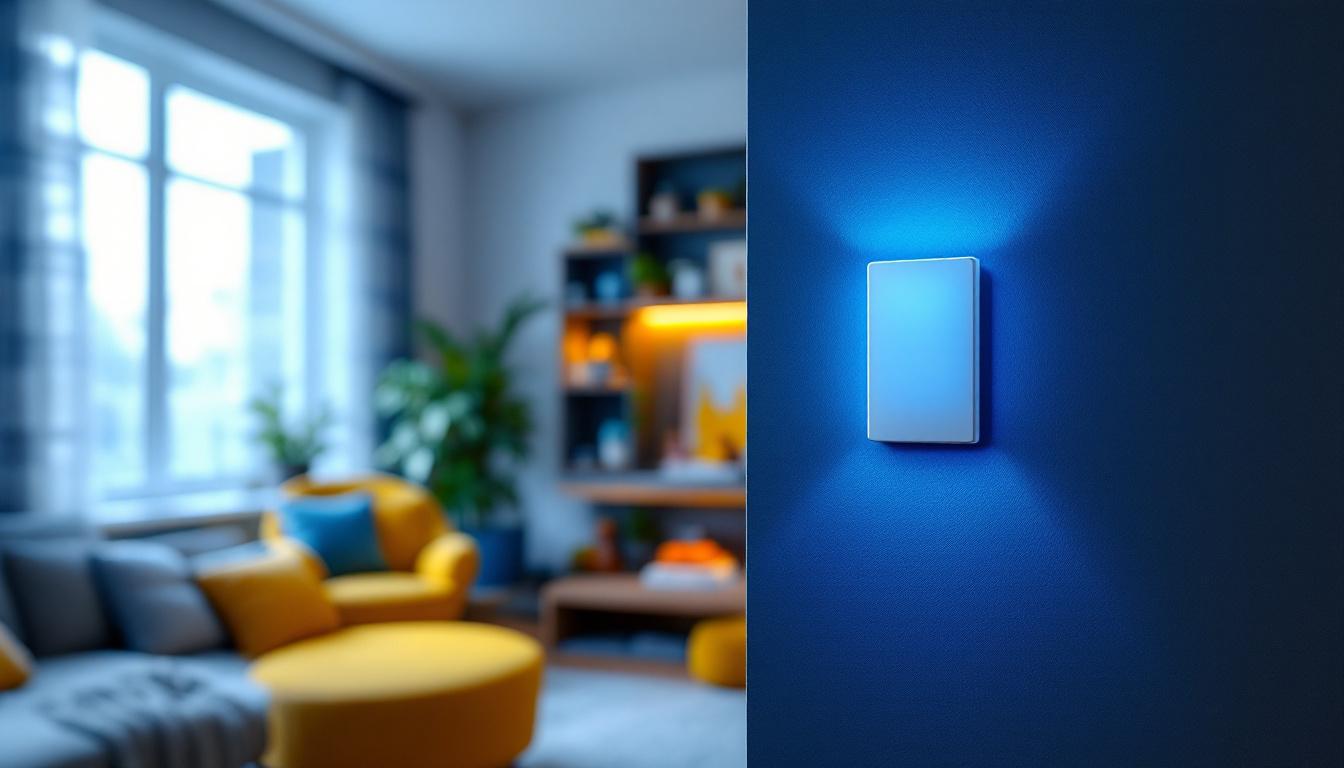
As the demand for outdoor lighting solutions continues to rise, lighting contractors must stay ahead of the curve by mastering the intricacies of exterior house lighting. This article delves into essential tips and best practices that can elevate the services offered by lighting professionals. From understanding the types of fixtures to mastering installation techniques, these insights will help contractors enhance their craft and meet client expectations.
Before diving into installation techniques, it’s crucial for lighting contractors to have a solid grasp of the various types of exterior lighting available. Each type serves a unique purpose and can dramatically alter the ambiance and functionality of outdoor spaces.
Pathway and step lights are essential for ensuring safety and accessibility in outdoor spaces. These fixtures illuminate walkways, driveways, and stairs, guiding visitors and residents alike. When selecting pathway lighting, consider the brightness and color temperature to create a welcoming environment.
Moreover, the placement of these lights is vital. They should be positioned at regular intervals to provide consistent illumination without creating harsh shadows. Utilizing LED fixtures can enhance energy efficiency while providing ample light. Additionally, incorporating solar-powered options can be an eco-friendly choice, reducing energy costs and promoting sustainability. The design of pathway lights can also complement the overall aesthetic of the landscape, with various styles available, from modern sleek designs to more traditional lanterns, allowing homeowners to express their personal style.
Accent lighting highlights specific features of a landscape, such as trees, sculptures, or architectural details. This type of lighting adds depth and interest to outdoor spaces, making them more visually appealing during nighttime. When installing accent lights, contractors should consider the angle and intensity of the light to avoid overexposure or under-illumination.
landscape lighting can also serve practical purposes, such as illuminating garden beds or water features. Utilizing a combination of uplights and downlights can create a balanced and harmonious lighting scheme. Furthermore, colored LED lights can be used strategically to enhance seasonal decorations or special events, adding a festive touch to outdoor gatherings. The interplay of light and shadow can transform a mundane garden into a magical retreat, inviting guests to explore and enjoy the beauty of the surroundings.
Security lighting is a critical component of exterior lighting design. It not only deters potential intruders but also enhances the safety of the property. Motion sensor lights are particularly effective, as they provide illumination when movement is detected, conserving energy when not in use.
When designing a security lighting plan, it’s essential to cover all entry points, including doors, windows, and garages. Additionally, using bright, white light can increase visibility and enhance the sense of security. Incorporating smart technology into security lighting systems can further elevate safety measures; for instance, lights that can be controlled remotely or programmed to mimic occupancy can create an illusion of activity when homeowners are away. This level of sophistication not only protects the property but also provides peace of mind, allowing residents to feel secure in their homes, no matter the time of day or night.
The selection of lighting fixtures can significantly impact the overall aesthetic and functionality of outdoor spaces. Contractors must consider various factors, including style, material, and energy efficiency.
Exterior lighting fixtures come in a range of styles, from modern to traditional. It’s crucial for contractors to understand the architectural style of the home and choose fixtures that complement it. For instance, sleek, minimalist designs may suit contemporary homes, while ornate fixtures may be better suited for classic or historic properties.
Additionally, color and finish play a significant role in the overall look. Fixtures in neutral tones can blend seamlessly with the environment, while bold colors can make a statement. Contractors should encourage clients to consider how the fixtures will look both during the day and at night. For example, fixtures with warm white light can create an inviting atmosphere in outdoor entertaining spaces, while cooler tones might be more appropriate for modern landscapes that emphasize clean lines and geometric shapes.
Furthermore, the placement of the fixtures can enhance the architectural features of the home and surrounding landscape. Strategically placed sconces can highlight entryways, while path lights can guide guests safely along walkways. Contractors should also consider the height and angle of installation to avoid glare and ensure optimal illumination.
Durability is a key consideration when selecting exterior lighting fixtures. Materials like stainless steel, brass, and high-quality plastics are often preferred for their resistance to weathering and corrosion. Contractors should advise clients on the best materials for their specific climate and environment. For instance, coastal regions may require fixtures that are specifically designed to withstand salty air and humidity, while arid climates may necessitate materials that can endure extreme heat without fading or cracking.
Moreover, the finish of the fixtures should be chosen carefully. Powder-coated finishes can provide additional protection against the elements, ensuring that the fixtures maintain their appearance over time. Some finishes may also offer a textured look, which can add depth and interest to the overall design. Additionally, contractors should discuss the maintenance requirements of various materials with clients, as some may require more frequent upkeep than others to preserve their aesthetic appeal.
With the growing emphasis on sustainability, energy-efficient lighting solutions are more important than ever. LED fixtures are a popular choice due to their longevity and low energy consumption. Contractors should educate clients on the benefits of LED lighting, including reduced electricity bills and minimal maintenance requirements. Furthermore, the lifespan of LED bulbs can often exceed 25,000 hours, making them a cost-effective choice in the long run.
Moreover, incorporating smart lighting systems can enhance energy efficiency further. These systems allow homeowners to control their outdoor lighting remotely, set schedules, and even adjust brightness levels based on the time of day or occupancy. For example, motion sensors can automatically turn on lights when someone approaches, providing both convenience and security. Additionally, integrating solar-powered fixtures can be an excellent option for homeowners looking to minimize their environmental footprint while still achieving beautiful outdoor lighting. By harnessing the power of the sun, these fixtures can reduce reliance on grid electricity and contribute to a more sustainable lifestyle.
Proper installation is crucial for ensuring the longevity and effectiveness of exterior lighting systems. Lighting contractors must adhere to best practices to deliver high-quality results.
Before installation begins, a well-thought-out lighting plan should be developed. This plan should include the placement of all fixtures, the type of lighting to be used, and the overall design scheme. Contractors should consider the specific needs of the client and the intended use of the outdoor space.
Additionally, conducting a site assessment can help identify potential challenges, such as existing landscaping, power sources, and local regulations. This proactive approach can prevent issues during installation and ensure a smoother process.
When it comes to wiring, safety should always be the top priority. Contractors must follow local electrical codes and regulations to ensure a safe installation. Underground wiring is often recommended for outdoor lighting to protect it from the elements and reduce the risk of damage.
Moreover, using low-voltage systems can enhance safety and energy efficiency. These systems require a transformer to convert standard voltage to a lower level, making them safer for outdoor use. Contractors should ensure that all connections are secure and waterproof to prevent electrical hazards.
Once the installation is complete, thorough testing is essential. Contractors should check each fixture to ensure it operates correctly and provides the desired level of illumination. Adjustments may be necessary to optimize the lighting effect, such as repositioning fixtures or adjusting brightness levels.
Additionally, contractors should educate clients on how to operate their new lighting system. Providing guidance on maintenance and troubleshooting can enhance customer satisfaction and build long-term relationships.
Providing exceptional service goes beyond the technical aspects of installation. Lighting contractors should focus on enhancing the overall client experience to foster positive relationships and encourage referrals.
Clear and effective communication is vital throughout the entire process. Contractors should take the time to listen to their clients’ needs and preferences, ensuring that their vision is understood. Regular updates during the project can help manage expectations and build trust.
Moreover, providing detailed explanations of the lighting options, installation process, and maintenance requirements can empower clients to make informed decisions. This transparency can lead to a more satisfying experience and increase the likelihood of repeat business.
After the installation is complete, offering ongoing support can set a contractor apart from the competition. Providing clients with contact information for any questions or concerns can enhance their confidence in the service provided.
Additionally, offering maintenance services can create a recurring revenue stream. Regular check-ups can ensure that the lighting system functions optimally, addressing any issues before they become significant problems.
The lighting industry is continually evolving, with new trends and technologies emerging regularly. Lighting contractors must stay informed to provide the best solutions for their clients.
One notable trend is the integration of smart home technology into exterior lighting systems. Homeowners are increasingly seeking solutions that can be controlled via smartphone apps or voice-activated devices. Contractors should familiarize themselves with these technologies to offer clients modern, convenient options.
Sustainability is another growing trend. Clients are more conscious of their environmental impact, leading to a demand for energy-efficient and eco-friendly lighting solutions. Contractors should stay informed about the latest advancements in sustainable lighting technologies.
Participating in workshops, seminars, and industry conferences can help contractors stay updated on the latest trends and technologies. Networking with other professionals can provide valuable insights and foster collaboration opportunities.
Moreover, pursuing certifications in specialized areas, such as landscape lighting design or energy-efficient systems, can enhance a contractor’s credibility and marketability. Clients are more likely to trust professionals who demonstrate a commitment to ongoing education and expertise.
Mastering exterior house lighting requires a combination of technical skills, creativity, and a deep understanding of client needs. By familiarizing themselves with various lighting types, selecting the right fixtures, adhering to best installation practices, and enhancing the client experience, lighting contractors can elevate their services and stand out in a competitive market.
Moreover, staying updated on emerging trends and technologies will ensure that contractors remain relevant and capable of meeting the evolving demands of homeowners. By embracing these tips, lighting contractors can not only enhance their craft but also create lasting relationships with clients, ultimately leading to a successful and fulfilling career in the lighting industry.
Ready to take your exterior house lighting projects to the next level? At LumenWholesale, we provide lighting contractors with the high-quality, spec-grade lighting products you need to shine. With our unbeatable wholesale prices and commitment to cutting out the middleman, you can trust that you’re getting the best value for your investment. Our extensive selection is designed to meet the highest industry standards, ensuring reliability and performance that won’t let you down. Plus, with the convenience of free shipping on bulk orders, you can stock up on premium lighting solutions without worrying about hidden fees. Elevate your lighting game and delight your clients with the perfect blend of quality, affordability, and convenience. Discover the difference at LumenWholesale by exploring our collection today. Wholesale Lighting at the Best Value.

Explore the rising significance of solar post lights in the outdoor lighting industry.

Discover the pitfalls lighting contractors often face with Tekscrews.

Discover why lighting contractors should prioritize outdoor spotlight shields in their projects.

Discover essential tips and insights for lighting contractors on selecting and installing LED light switches.